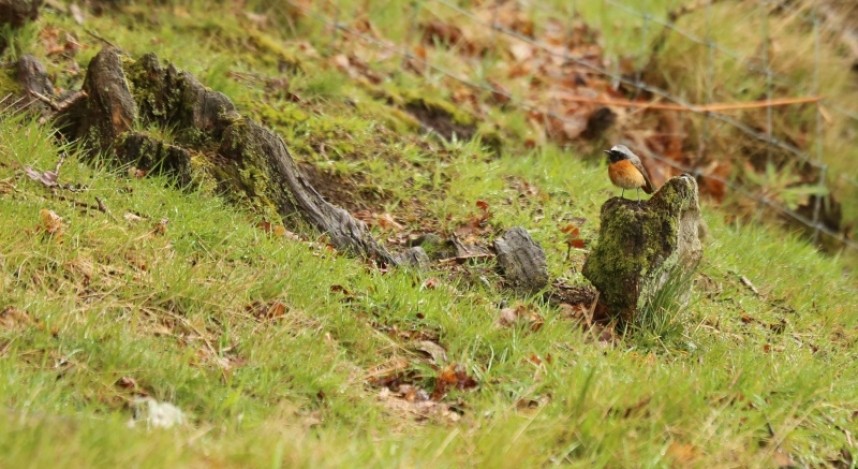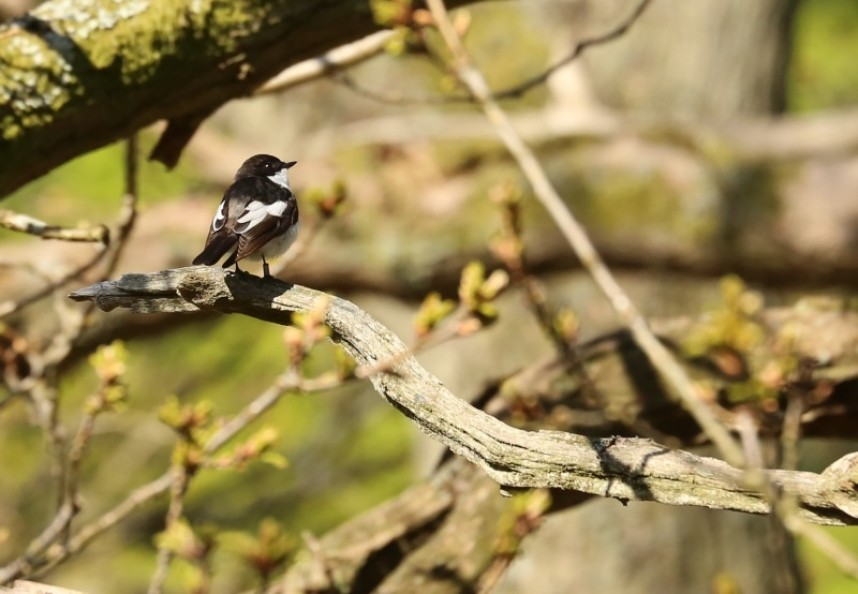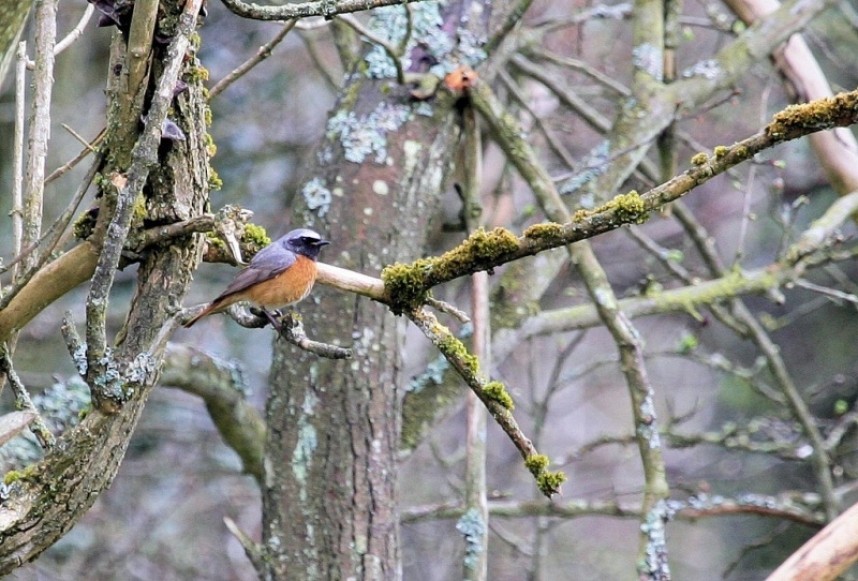What To Look Out For - April 2018
Jewels from Africa Arriving in April
If you love wildlife there is nothing better than standing silently in a British Oak woodland in spring drenched by sunshine, among a carpet of Bluebells and birdsong. There are two migrant song birds which have long been recognised as two of our most beautiful woodland birds; Common Redstart and Pied Flycatcher.

Male Redstart Bridestones North York Moors NP © Richard Baines
Male Redstarts are stunning birds full of colour, from their black throats and white forehead to their orange-red breast and flashing red tail. Pied Flycatchers are very different but equally as dapper in their black and white dress. Redstarts have long been my favourite British bird ever since when I was 18 I was asked by school children what my favourite bird was, immediately without thinking I said Redstart!

Male Pied Flycatcher Hawnby North York Moors NP © Richard Baines
Both species spend the winter in Africa leaving our shores in autumn. Redstarts winter in the Sahel zone from the coast of Senegal in the West to Eritrea in the East. Satellite tracking of Pied Flycatchers has revealed they travel further, across the massive Saharan desert to a wintering area in Liberia and southeast Guinea. Recent research carried out by the Royal Society for the Protection of Birds (RSPB) has discovered a link between declines in the population of migrant birds spending the winter in the humid zone south of the Saharan desert. Click here for more info.

Male Redstart Bridestones North York Moors NP © Dan Lombard
Both of these birds arrive back on their breeding sites from mid-April through to early May. Both nest in natural holes in old tree trunks ort their branches. Pied Flycatchers take to nest boxes better than Redstarts which can be found nesting in stone walls or buildings. Older Oak and Hazel woodlands between Helmsley and Osmotherly can be good areas to look out for Pied Flycatchers. Redstarts could pop up anywhere in the North York Moors National Park wherever there is suitable woodland and beautiful old gnarly trees with lots of nesting opportunities.
Richard Baines YCN



 Back to Blog
Back to Blog
